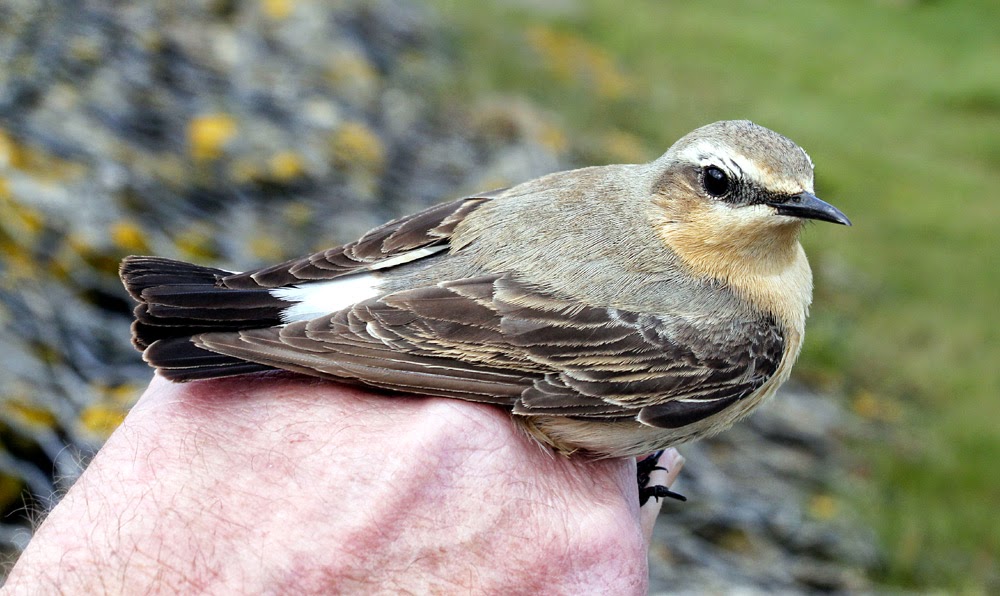Here’s the problem - if I don’t get out for local patch birding I get withdrawal symptoms. This morning I had to stay home to await a delivery and phone calls which didn’t arrive at the promised time. There followed a trip to the Post Office with a package to weigh and then post. Such time consuming non-essentials of life are specifically designed to frustrate and annoy the avid birder and prevent them from discovering the rare bird which will propel them to the summit of the Best Birders League instead of languishing in the lower divisions as I do.
So Pilling it was, albeit late in the day. Some joy ensued with the first Lapwing chicks of the year, two bundles of fluff which escaped the plough of recent days. So fresh were the chicks they were too small for a ring and in any case the farmer was still busy nearby in churning up the remainder of the field and ploughing in unseen nests. I’ll go back in a day or two and hopefully relocate the two youngsters. Looking on the bright side, and also judging by the furrows, we are in for a crop of vegetables to eat rather than acres of silage.
On the unploughed bits of land remains a flock of 130+ Linnets as well as a number of Lapwings, Oystercatchers and Redshanks with breeding intent; to be fair the farmer is leaving a reasonable amount of uncultivated margin for both waders and Skylarks to nest. A single Golden Plover along the top of the furrows rather woke me up as it silently flew off but it turned out not to be a Dotterel.
The Stoat was around again, this time slinking along the margins of the same field I saw it in a few days ago and up to no good I’m sure when there are all those ground nesting birds and fresh eggs to take.
The Stoat was around again, this time slinking along the margins of the same field I saw it in a few days ago and up to no good I’m sure when there are all those ground nesting birds and fresh eggs to take.
Four Whimbrel flew over calling and heading south - a strange direction for Iceland bound migrants. As of recent clear days the woodland was quietish, enlivened by 2 soaring Buzzards, 1 hovering Kestrel, 1 scratchy Whitethroat and 2 liquid Blackcap.
I drove to Cockerham for a look at one of the very few Sand Martin colonies in this part of coastal Lancashire. Cockerham is a small village and civil parish a mile or so north of Pilling. The village (population c650) is located close to the River Cocker at the estuary of the River Lune.
There have been a few pairs of Sand Martins on Chris and Margaret’s farm for a number of years, but following a period of gravel extraction about three years ago the colony of martins increased greatly. Today there was probably in excess of 40 Sand Martins with much activity around last year’s nest holes in the quarry face and pretty soon the newly arrived martins will be laying their first eggs.
The gravel extraction left a good sized water area and associated margins where Lapwings and Oystercatchers breed, and in some years Little Ringed Plover. There were no tiny plovers today just 20 or so very noisy Oystercatcher, 8 Lapwing, 1 Canada Goose and 8/10 Pied Wagtails. A Wheatear took advantage of farm machinery as a lookout post, and along the same track were a good number of Linnets, Goldfinches and Tree Sparrows.
It wasn’t a bad few hours after all, entertaining and productive, even for one who likes to be out at the crack of dawn, but I won’t make a habit of late starts.
Linking today to Eileen's Saturday Blog and Run-a-Roundranch.
Linking today to Eileen's Saturday Blog and Run-a-Roundranch.





















































.jpg)












